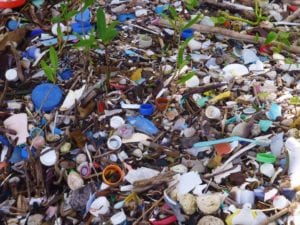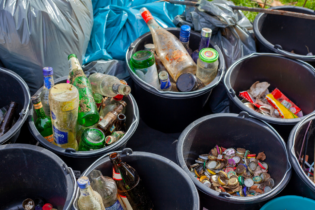
Typically, mangrove swamps team with tiny living critters who make their homes in the wet earth and beneath thick tree roots — but not when these areas are smothered with plastic
Mangrove swamps normally team with life, as small scuttling things make their homes in underground holes and in among thick plant roots.
However, when marine scientist Dr Brent Newman visited Durban harbour recently, he was surprised to find not a single crab in the mangroves near the Bluff Yacht Club.
The reason was a thick layer of plastic and other floating debris choking the site, which should otherwise have been biologically rich.
“The mangroves were full of plastic, obliterating habitat for crabs. We could not find even one,” the Council for Scientific and Industrial Research (CSIR) scientist told a panel discussion at the University of KwaZulu-Natal (UKZN).
Microplastics
During panel discussion, marine biologist Dr David Glassom pointed out that several species of young fish studied off the Durban coastline were experiencing stunted growth and increased mortality as a result of ingesting microplastics – plastics which find their way into the Ocean and are broken down by natural processes.
Plastic marine pollution is a relatively recent phenomenon, spawned by the consumer culture popularised in the 1050s which saw a greater use of single-use packaging containers and utensils.
University of Georgia marine plastic pollution researcher, Dr Jenna Jambeck, estimates that as much as 8 million tons of plastic found its way into the world’s oceans in 2010 alone.
Her research indicates that South Africa is one of the worst culprits. Of the 20 highest countries who mismanage their plastic waste, South Africa took the 11
th spot, making it worse than India, the US and 23 European countries.
The worst offender is China.
“In 1960 plastic made up less than 1% of solid waste in municipal garbage dumps but this has increased to around 10% in countries where data was available,” said Jambeck.
She estimates that 60% of all plastics ever produced have gone to landfill or otherwise found their way into terrestrial and marine environments.
“Without a well-designed and tailor-made management strategy for end-of-life plastics, humans are conducting a singular, uncontrolled experiment on a global scale,” she added.
Permanent problem
Jambek believes that the mountain of plastic and other wastes will keep growing for at least 80 years, especially in Africa and other developing nations. This is anticipated to lead to “near permanent” environmental contamination.
“About 7 800-million tons of plastic resins and fibres have been produced globally since 1950 – half of this in the last 13 years,” she concluded.
Source: The Mercury








